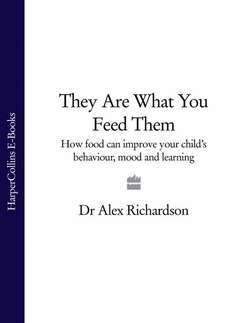Читать книгу They Are What You Feed Them: How Food Can Improve Your Child’s Behaviour, Mood and Learning - Dr Richardson Alex - Страница 98
Antioxidants
ОглавлениеChemical reactions go on all the time in our bodies and brains. Some of the by-products are ‘free radicals’, dangerous substances that can attack any parts of our cells and tissues, and play a direct or indirect role in most major diseases and disorders, as well as the deterioration we’ve come to associate with ‘normal’ ageing.
Environmental pollution also exposes us to free radicals. (Smoking gives you millions of free radicals in every puff. Give up if you can—and don’t expose your child to smoky atmospheres.)
Antioxidants are our defence against free radicals, so a diet low in antioxidants means your child is more vulnerable to cellular attack. Different antioxidants act in different and complementary ways, and we need them all. For example, vitamin E is needed to stop important fatty acids from ‘oxidizing’, but it won’t work without vitamin C. The only way to give your child the full mix of antioxidants is with a diet rich in a variety of nuts, seeds, whole grains, fruits and vegetables.
Antioxidants that come straight from the diet include vitamins A, B, C and E—and also flavonoids and co-enzyme Q10. You can make some of your own antioxidants in the form of enzymes and other compounds. However, to do this you need certain minerals (for example, copper, zinc and selenium), as well as compounds such as glutathione (a peptide), oestrogen (a hormone) and melatonin (produced when you sleep).
